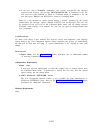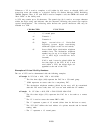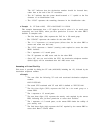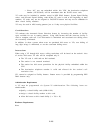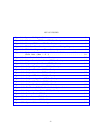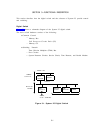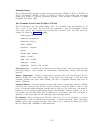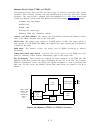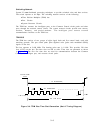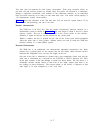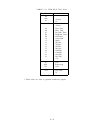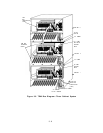Common Control
The Common Control circuitry consists of the Call Processor (ZTN82 in R1V1 or ZTN128 in
R1V2) and Memory (ZTN81 in R1V1 or ZTN127 in R1V2) Circuit Packs and associated
memory bus which is a 60-wire (including grounds), 39-bit (16-data, 23-address,), 6 MHz
frontplane flat ribbon cable.
Call Processor Circuit Pack (ZTN82 or ZTN128)
The Call Processor runs the system feature code.
It is powered from the backplane by +5
and -5 volts. It also draws -48 volts from the backplane to drive the Emergency Transfer
Unit. Each system must include one Call Processor Circuit Pack. The Call Processor
circuitry, as shown in Figure 3-2 includes:
● Microprocessor
● Memory management
● On-board memory
● EIA channels
● Network controller
● Clock
● Front plane interface
● Reset circuitry
● Bus error circuitry
● Interrupt circuitry
● Emergency Transfer Unit Control.
Microprocessor:
A 68010 16-bit microprocessor that executes call processing and data
processing features. This includes all maintenance, administration, testing, and reporting
software.
Memory Management: Memory management separates the on-board Random Access
Memory (RAM) into 1024 memory pages of 256 bytes each. Each page is read and write
protected, generates bus errors when violated, and each is recappable allowing data areas to
remain contiguous.
On-Board Memory: On-board memory includes 64k bytes of Read Only Memory (ROM)
containing the power-up tests and the switch operating system. In addition, there is 80k
bytes of protected RAM containing writable data storage for call processing. The RAM is
backed up by an on-board trickle-charge battery that maintains memory contents for up to
two months. Of the 80k RAM, 24k is dedicated to translation data. The remainder is
dedicated to call status data and the operating system message queues.
EIA Channels:
Four asynchronous RS-232 EIA ports (l-4) are included to permit
communication with an administration terminal, a Station Message Detail Recording
(SMDR) device, and a digital tape unit. (The fourth port is reserved for future use.) Each
port can support 300, 1200,4800, or 9600 baud rates.
3-2



